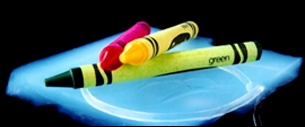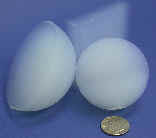|
|
|||
|
Refractory Metals - Composites -Special Alloys - Ceramics -Tungsten - Titanium
Aerogels
A common feature of all aerogels and nanofoams are their open, ultra small inter connected pores with a size of <100nm (0.100 nm). This open cell structure provides access to the entire surface area for reaction/deposition of materials as either gas or ions in solution. The physical properties of aerogels are controlled by the density and microstructure of the gel.
PRICING & ORDERING INFORMATION If you have any questions on what product is right for you, contact one of our customer care representatives Toll Fee 877-452-4910
Silica AerogelSilica Aerogel Lowest density solid made, superior insulator Silica Aerogels are generally known for being an extremely lightweight transparent solid (down to <0.05 g/cm3) with excellent thermal insulating properties, high temperature stability, very low dielectric constant, and extremely high surface area. Some initial applications have included atomic particle detectors and super insulation for aerospace applications and they were used to insulate the Mars rover. Click to Learn More
Resorcinol-formaldehyde (RF) NanofoamResorcinol-formaldehyde (RF) Nanofoam Precursor for carbon nanofoam Monolithic resorcinol formaldehyde (RF) nanofoams are primarily used as the precursor for carbon nanofoams or when an organic, electrically insulating material is desired. The standard RF nanofoam is offered as a high density material of 0.6 g/cm and has a surface area of 600 m2/g. Researchers wanting to control the pyrolysis conditions (atmosphere, temperature, time, etc.) during the processing of a carbon nanofoam can begin with RF nanofoam. Low density material is also available. Click to Learn More Carbon NanofoamElectrically conductive carbon nanofoams are a new material with many of the properties of traditional Aerogel material. These materials are available in the form of monoliths, granules, powders and papers. They are synthetic, lightweight foams in which the solid matrix and pore spaces have nanometer-scale dimensions. Prepared by sol-gel methods, nanofoams typically have low density, continuous porosity, high surface area, and fine cell/pore sizes. The foams are also electrically conductive and have a high capacitance. Click to Learn More | |||





